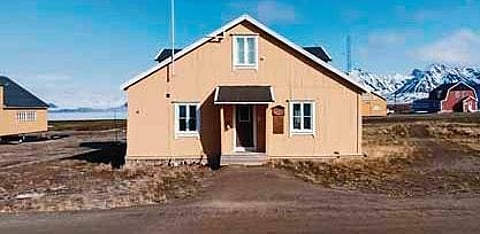

BENGALURU: They ushered in the New Year with researchers from 10 other countries who have come to Svalbard, a global science village in Norway, in the world’s northernmost inhabited place for research on the Arctic. India is among 11 countries doing research in the polar region, and in a first, has sent a team of four researchers for the winter expedition, which will last till March this year.
The Indian research team comprising Girish BS, research scientist, Raman Research Institute (RRI), Bengaluru; Athulya R, research scholar, National Centre for Polar and Ocean Research (NCPOR), Goa; Surendra Singh, senior project associate, Indian Institute of Tropical Meteorology (IITM), Pune; and Prashant Rawat, research scholar, Indian Institute of Technology, Mandi, has settled down well and commenced research amid the unique experience of polar nights and temperatures ranging between -20 degrees and -10 degrees Celsius.
Arctic warming 4 times more than rest of planet
“Initially, it took us some time to acclimatise ourselves to long polar nights when we arrived here on December 21, but now we are much better off,” the researchers said on a video call with TNIE. NCPOR is the nodal agency for the Arctic expedition and managing Himadri, India’s research and housing facility. They conduct research at Ny- Ålesund, the world’s northernmost year-round global research station at Svalbard.
“Long-term and continuous atmospheric data from Himadri is critical, as the Arctic is warming nearly four times more than the rest of the world,” said NCPOR Director Thamban Meloth.
Girish is in the Arctic to find out if Himadri can be a suitable site to deploy SARAS (telescope developed by RRI that provides astronomers clues to the nature of the universe’s first stars and galaxies) for experiments on the cosmic dawn.
“Not much is known about the cosmic dawn because of a lack of proper observation. The signals are extremely faint and difficult because of brighter radiation from our galaxy and man-made terrestrial interference,” added Girish.
Cosmic dawn is the period from about 50 million years to one billion years after the Big Bang, when the first stars, black holes and galaxies in the universe were formed.
Athulya is studying the impact of warming in a coastal Arctic. "Warming is prominent in winter and that is when precipitation is also strong. As someone focussed on precipitation variability, I am looking at the impact of warming on precipitation,” she added.
Surendra’s specialisation is atmospheric lightning and he is studying the electrical characteristics of clouds over the Arctic during winters.
“Observation of electric fields and current during lightning periods over the Arctic would provide an opportunity to understand the electrical properties of thunderstorms. The experiment will continue for three years to compare data of summer and winter seasons,” he added.
Prashant is undertaking sampling of aerosols (tiny particles suspended in the atmosphere). “Lack of yearly data and comparison between seasons for aerosol parameters leads to uncertainty in the estimation of the effect of aerosols on polar and global climate. The Arctic has different sources of aerosols round the year. Winter plays a very specific role as absence of photochemistry can help in better understanding of primary sources and secondary pathways, and also increased ice cover area, which has significant aerosol deposition,” he added.
Dr Rohit Srivastava, scientist, NCPOR, who is also nodal officer of Indian Arctic Operations, said India is developing PolAerNet --- a polar aerosol network in all three poles (Arctic, Antarctic and Himalayas) to understand the role of aerosols in polar warming.
Besides work, the researchers spoke about bonhomie among the global scientist community as neighbours in this tiny village. “There are rules that at the dinner table, no one will carry a gadget. We talk about ourselves and the experiments. We bond well,” said the team. The fear of polar bears is real since the Arctic is their natural habitat and there are guidelines for them to stay safe.
“We are well taken care of by Kings Bay, the Norwegian facilitator for Ny-Ålesund Research Station. The temperature inside Himadri is controlled, and when we have to go to the Gruvebadet atmospheric laboratory, located about 1 km south of Ny-Ålesund, we are provided with necessary polar gear and snow scooters. It’s a beautiful place. The moonshine keeps us company,” they added.